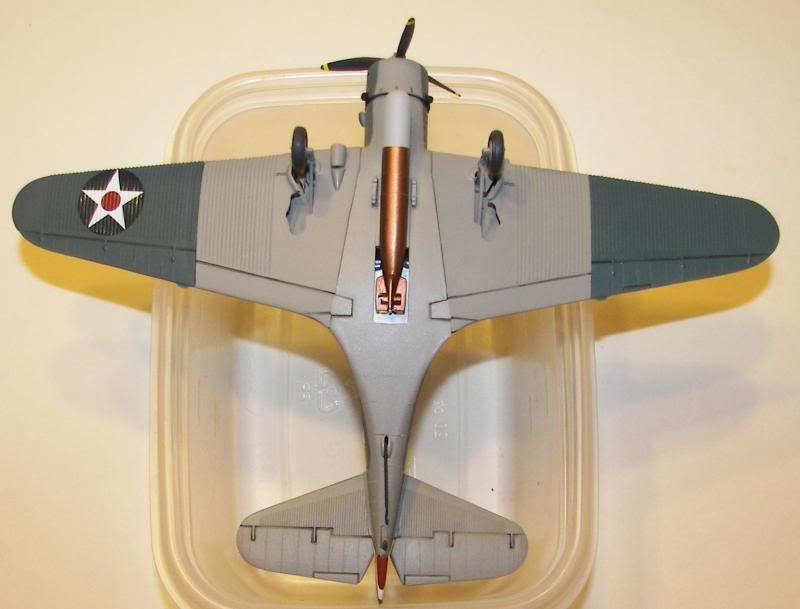A couple of things to note about the Airfix Devastator, then I'll let the pictures speak for themselves.
Either due to my construction, or the kit engineering, the dihedral on the wings doesn't match too well. Not being obvious till I set it on its landing gear, I didn't do anything about it. But then, I'm not sure I would have known what to do about it if I'd discovered it earlier.
During the "unmasking" after painting, I managed to break the instrument panel loose. Since the fuselage was closed up, I couldn't get it back in--although I did manage to shake it out, so it isn't rattling around inside. Use more superglue next time!
It's not obvious anyway, though, since the "clear" canopy is pretty opaque, not uncommon in older Airfix kits..
I had some problems getting the decals to snuggle over the wing corrugations, even with MicroSol. I ruined two decals on the upper port wing alone. Third time was the charm.
The aircraft represents T1, flown from USS Lexington (CV-2) by Lt. Cmdr. James Best, CO of VT-2 during the Battle of the Coral Sea. If I remember rightly from Blue Skies and Blood, the Lex's torpedo group did not find the Japanese task force at all during the battle, and all torpedo damaged was caused by the Yorktown's VT.
First, then, a couple of shots of the undersides.

I added some stretched sprue to represent the wires passing across the torpedo slung under the fuselage. They aren't too visible in these shots, but show up better in later views.

I used a thin black acrylic wash in the recesses of the control surfaces--otherwise I didn't do any weathering, something I don't excel at, anyway.